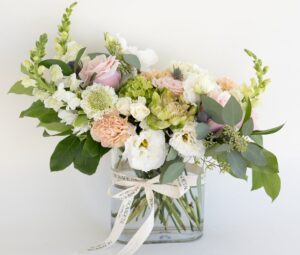Coffee has long reigned supreme as the go-to beverage for early risers, busy professionals, and caffeine aficionados. But as consumer preferences evolve, a quiet revolution is brewing — and it smells like cardamom and cinnamon. Across cafes, kitchens, and social media, more and more people are choosing chai over coffee for its rich flavor, cultural depth, and health-conscious appeal. So, is chai just a passing fad, or are we witnessing a genuine shift in coffee culture?
Let’s explore how chai is making its mark and why it might just be the next big thing in the world of caffeine.
The Rise of Chai in the Western World
To understand why chai is trending, it’s important to know what it is — and what it isn’t. The word “chai” simply means “tea” in Hindi, but in the West, it has come to represent “masala chai” — a spiced blend of black tea, milk, and aromatic spices such as ginger, cardamom, cinnamon, cloves, and black pepper.
While chai has been a staple in South Asian households for centuries, it began catching the attention of Western consumers in the early 2000s with the introduction of the “chai latte” at mainstream coffee chains. At first, it was treated as an exotic, sweet, and milky cousin of coffee-based lattes. But today’s chai enthusiasts are moving past syrupy, commercialized versions and embracing authentic brews — and that shift is central to its growing appeal.
A Cultural Touchstone in a Cup
The popularity of chai isn’t just about flavor — it’s about experience. While coffee culture often emphasizes speed, convenience, and solo consumption, chai culture centers on slowing down and connecting with others.
In South Asia, chai is more than a drink — it’s a daily ritual, a reason to gather, a symbol of hospitality. Sharing a cup of chai means sharing stories, time, and tradition. As people become more interested in experiences that feel grounded, meaningful, and intentional, chai offers a cultural depth that coffee sometimes lacks
Health-Conscious Consumers Are Taking Note
Health trends also play a key role in the shift toward chai. While coffee is loved for its energy boost, it can also come with side effects like jitters, acid reflux, and caffeine crashes. Chai, on the other hand, contains less caffeine and is often brewed with anti-inflammatory and digestive-supporting spices like ginger and cardamom.
Consumers looking for balance — something warm and energizing but gentler on the body — are increasingly turning to chai. In addition, the growing popularity of plant-based milks pairs well with chai, as oat, almond, and soy milk all complement its flavor beautifully.
Chai’s Flexibility: Hot, Iced, or Infused
One reason chai fits so well into modern café menus is its incredible versatility. Hot chai is cozy and nostalgic. Iced chai is refreshing and invigorating. Chai lattes feel luxurious, and dirty chais (chai with a shot of espresso) offer the best of both worlds for those who aren’t ready to give up coffee completely.
Moreover, chai is finding its way into desserts, cocktails, and even skincare products. Chai-infused chocolates, spiced syrups, and scented candles reflect the growing fascination with its flavor profile and cultural resonance.
This adaptability is key to chai’s rise. It can be traditional or trendy, homemade or café-bought, pure or personalized.
Aesthetic and Instagram Appeal
Let’s not underestimate the power of aesthetics. In the era of “Instagrammable” drinks, chai delivers. The earthy tones of a chai latte, the elegant swirl of milk and spices, and the minimalist mugs that often accompany it all contribute to a photogenic beverage experience.
But it’s not just about looks. The trend toward cozy, “hygge”-inspired lifestyles makes chai — with its warm colors and soothing vibes — the perfect fit for a generation craving comfort and calm.
Social media influencers and food bloggers often promote homemade chai recipes, tea ceremonies, and slow-living content centered around the ritual of chai, further fueling the trend.
Chai and Coffee Can Coexist
It’s important to note that the rise of chai doesn’t necessarily signal the decline of coffee. Many consumers enjoy both, and the growing popularity of chai actually enhances café diversity rather than threatening coffee’s dominance.
What we’re seeing is an expansion of what’s considered part of “coffee culture.” Specialty tea menus, global flavors, and fusion beverages are redefining the modern café experience. Chai brings a new voice to the table — one rooted in tradition but adaptable to contemporary tastes.
Forward-thinking coffee shops are embracing this, offering authentic chai alongside espresso shots, matcha, and cold brews. Some are even collaborating with South Asian chefs and artisans to develop house-made chai blends that respect its roots.
The Desi Diaspora’s Role in Chai’s Rise
The growing influence of South Asian communities across the U.S., Canada, and the UK has also played a significant role in chai’s emergence. Younger generations of the desi diaspora are reclaiming their cultural heritage, often through food and drink.
Chai has become a powerful cultural symbol — not just of tradition, but of identity, pride, and self-expression. Desi-owned cafés are opening in major cities, offering authentic masala chai made with love and precision, not powder and syrup. These spaces aren’t just selling tea; they’re creating cultural hubs where community and creativity thrive.
And it’s not just for South Asians. People of all backgrounds are flocking to these cafés to experience chai the way it’s meant to be made — with intention, authenticity, and heart.
Chai in the Specialty Beverage Market
As consumers become more sophisticated in their tastes, the specialty beverage market is expanding. Just as there’s a demand for single-origin coffee or ceremonial-grade matcha, there’s growing interest in premium chai.
Artisanal chai blends, spice subscription boxes, and small-batch concentrates are appearing everywhere. Online retailers and boutique tea companies are catering to chai aficionados with high-quality ingredients and customizable kits.
This movement reflects a deeper appreciation for the craft of chai-making and the uniqueness of each blend. People are beginning to treat chai with the same reverence once reserved for coffee beans or wine varietals — and that’s a huge cultural shift.
The Road Ahead: Will Chai Sustain Its Momentum?
Is chai a lasting trend or a fleeting curiosity? The signs suggest it’s here to stay. Its growth is being driven not by novelty but by substance — by flavor, by culture, and by experience.
Chai fills a gap in the market: a beverage that’s both invigorating and soothing, both steeped in history and ready for reinvention. As long as people crave authenticity, connection, and warmth, chai will continue to thrive.
More cafés are training baristas to master chai brewing techniques. More restaurants are including chai on their dessert and drinks menus. And more people are discovering that the perfect cup of chai might just rival — or surpass — their beloved latte.
Discover Chai for Yourself
Whether you’re a lifelong coffee drinker, a tea lover, or someone in between, chai has something to offer you. It’s not just a drink — it’s an invitation: to pause, to taste, to reflect, and to connect.
And if you’re looking for a place to begin your chai journey, why not explore tea or coffee near Michigan that serves authentic South Asian flavors? The best cups are brewed with heritage, love, and just the right amount of spice — and they’re often found in unexpected places. So next time you’re searching for comfort in a cup, consider chai. It might just change the way you think about your daily brew.









